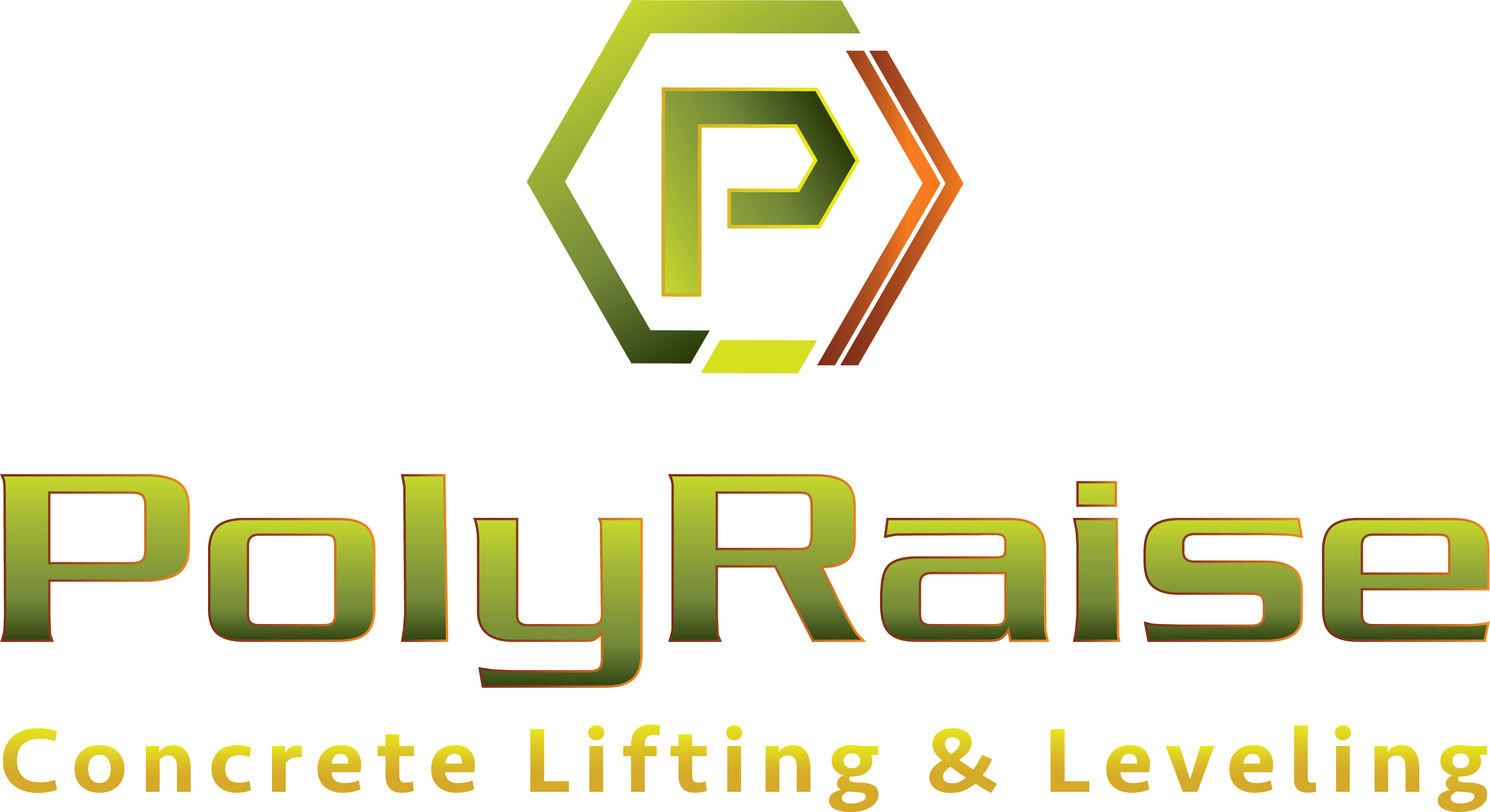Concrete Raising INFO: What you should know
POLYURETHANE CONCRETE RAISING TECHNIQUE
 Our concrete repair method includes the controlled lift of individual slabs of concrete. We achieve a precise lift by first drilling a small hole (holes) and applying a tapered delivery port into the hole (holes). An injection gun is then connected to the port and polyurethane foam is injected just beneath the surface of the slab. Through a chemical reaction, the high density foam expands within several seconds stabilizing loose soils, eliminating the void and raising the slab of concrete. This process seals and stabilizes all defective joints and sources of water penetration from further erosion. Water erosion, hard freezes and different types of soils across the midwest region are often the root of the problem. PolyRaise’s concrete repair method treats the soils and addresses the water and erosion issues.
Our concrete repair method includes the controlled lift of individual slabs of concrete. We achieve a precise lift by first drilling a small hole (holes) and applying a tapered delivery port into the hole (holes). An injection gun is then connected to the port and polyurethane foam is injected just beneath the surface of the slab. Through a chemical reaction, the high density foam expands within several seconds stabilizing loose soils, eliminating the void and raising the slab of concrete. This process seals and stabilizes all defective joints and sources of water penetration from further erosion. Water erosion, hard freezes and different types of soils across the midwest region are often the root of the problem. PolyRaise’s concrete repair method treats the soils and addresses the water and erosion issues.
♦ The average life span of concrete is extended at a fraction of the cost of replacement. ♦

BENEFITS OF POLYURETHANE FOAM LIFTING
♦ LONG LASTING! Polyurethane cures as a solid, impermeable structure which adheres to the concrete and is not susceptible to fracture or failure.
♦ SOIL STABILIZATION! Polyurethane is injected as a liquid and reacts within the loosely, uncompacted soils to solidify and stabilize those soils.
♦ LESS INVASIVE! PolyRaise uses controlled injections in 3/8″ – 5/8″ holes to raise your concrete quickly and effectively.
♦ LIGHTWEIGHT! Polyurethane weighs around two pounds per cubic ft.
♦ IT’S FAST! Polyurethane sets up and cures within minutes, with your concrete ready to use again in 15 minutes or so once we leave the job!
♦ DEFEND AGAINST MOTHER NATURE SAFELY! Our environmentally friendly solution creates a barrier to moisture, chemicals, insects, rodents and erosion.
WHAT IS POLYURETHANE FOAM LIFTING?
Settled Concrete Can Cause BIG Headaches!
Concrete settling and sinking is quite common. It occurs when the soil, at the time of installation, was not compacted properly, or when water runoff is not channeled properly. Concrete sinking may also happen due to the simple natural settling of earth over time. Polyurethane Foam Lifting is the process (described previously) of filling the voids under concrete, which results in the lifting of the concrete slab.
**Homeowners, property owners, business and municipalities may experience concrete becoming uneven and in need of a PolyLift:
♦ Steps
♦ Patios
♦ Entryways
♦ Pool Decks
♦ Warehouse Floors
♦ High Traffic Forklift Areas
♦ Walkways
♦ Roads
♦ Bridge Approaches
♦ On or Off Ramps
Any of these situations can pose significant safety and potential liability issues.
CONCRETE REPLACEMENT IS EXPENSIVE!
Concrete contractors typically make up to three trips to a location in order to replace a simple slab of concrete with removal, framing, pouring, removal of framing material and cutting. Add to this the ever growing problem of environmental constraints of concrete disposal.
Be environmentally friendly! Repair your concrete instead of replacing it!
WHAT CAN BE DONE WITH SETTLED CONCRETE?
- Grinding: Inexpensive option, but not aesthetically pleasing to the eye. Grinding concrete exposes the aggregate in the concrete. The integrity and strength of the concrete slab is also compromised during this process. If the concrete continues to settle, a ground slab can no longer be raised and leveled.
- Replacement: Most expensive and time consuming option to level concrete. Colors of slabs will not match and can contribute to significant downtime of the area for curing time.
- Raising & Stabilizing: Polyurethane concrete raising is used to raise and support settled concrete or unstable concrete slabs by drilling small holes and pumping material under the slab. Settled concrete is commonly a result of poor soil conditions below a slab.

